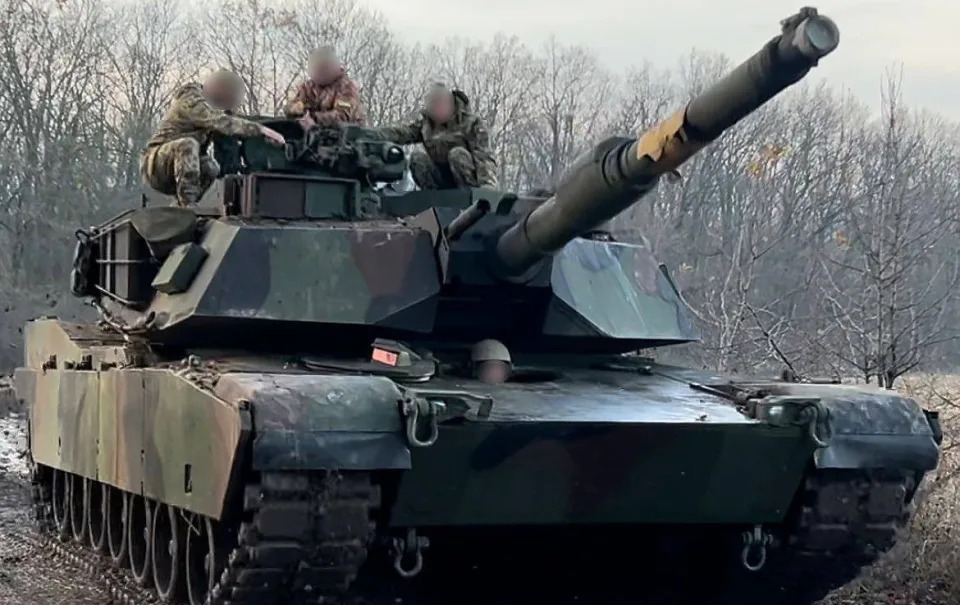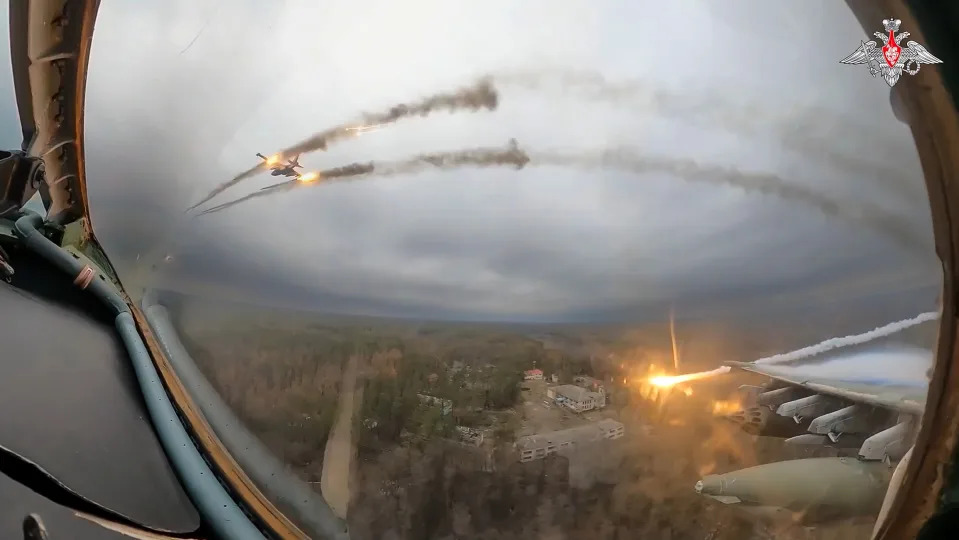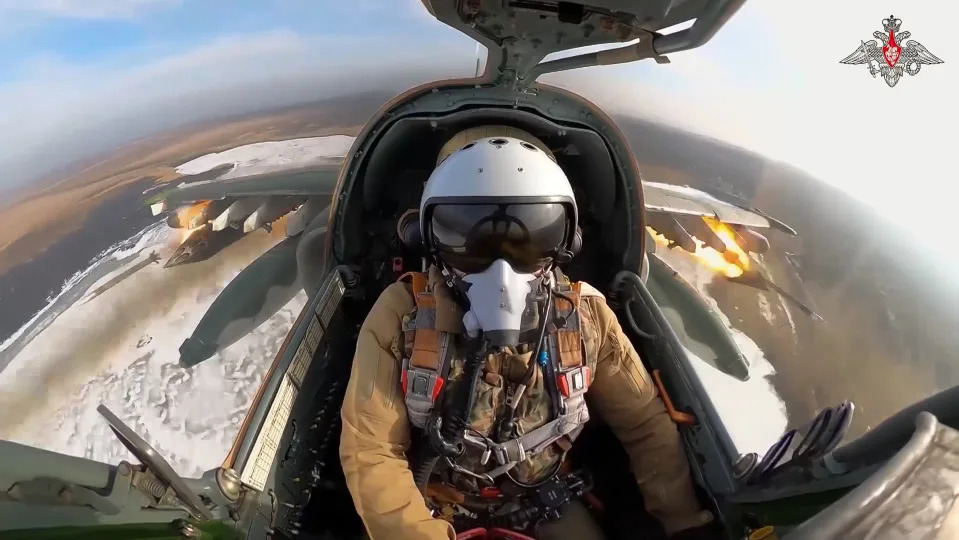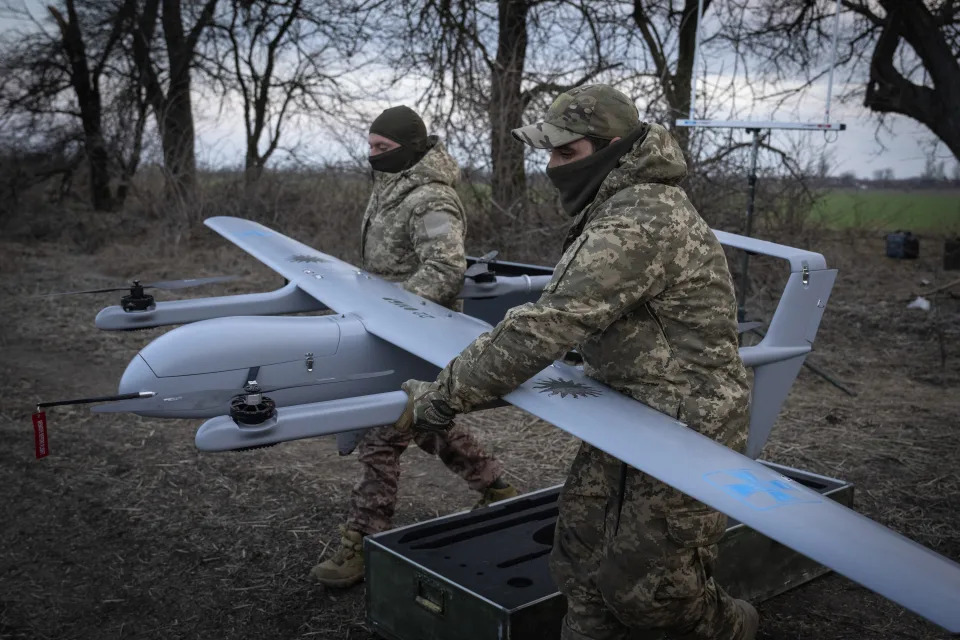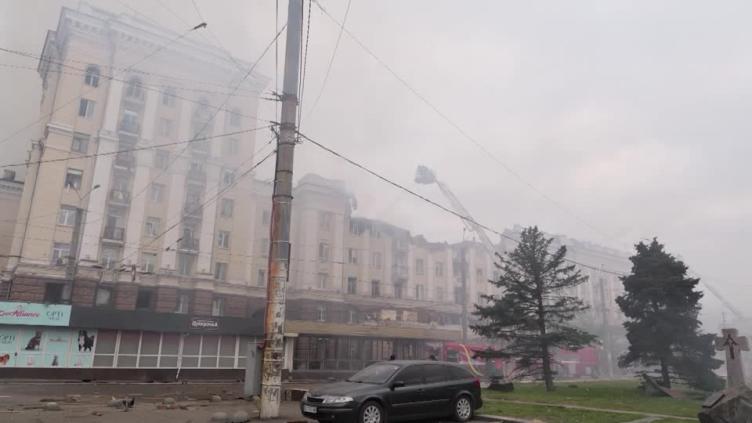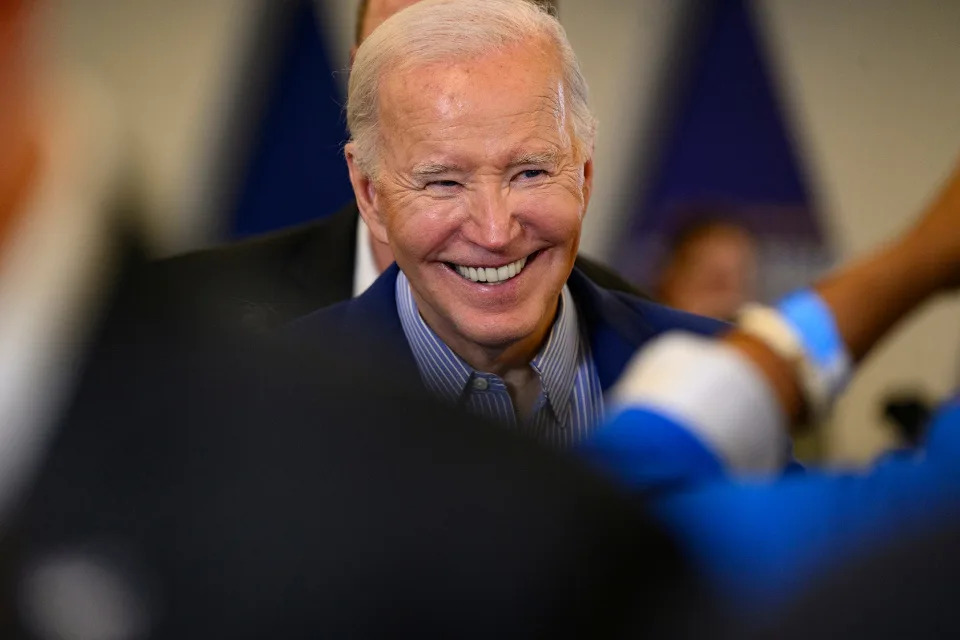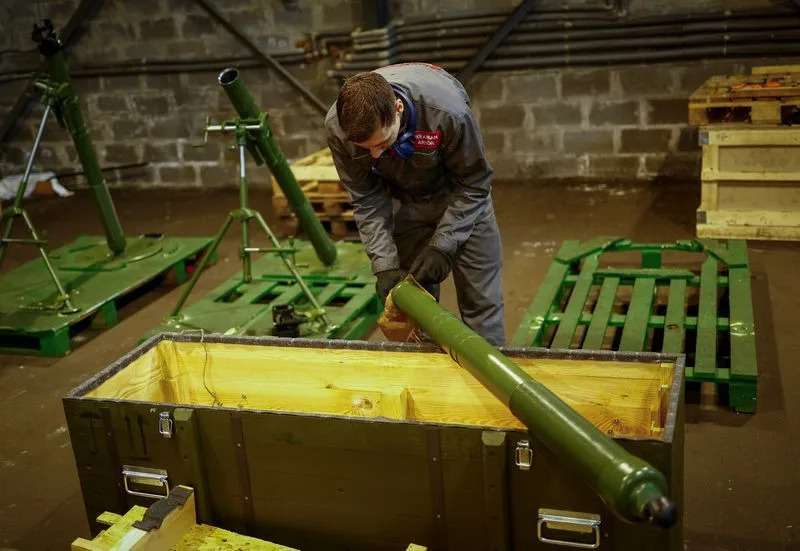Los Angeles Times
In Ukraine’s old imperial city, pastel palaces are in jeopardy, but black humor survives
Laura King – April 21, 2024

On a cool spring morning, as water-washed light bathed pastel palaces in the old imperial city of Odesa, the thunder of yet another Russian missile strike filled the air.
That March 6 blast came within a few hundred yards of a convoy carrying Ukraine’s president, Volodymyr Zelensky, who was touring the country’s principal shipyard with the visiting Greek prime minister, Kyriakos Mitsotaki.
It was a close call, but Ukrainian officials said that in all likelihood the two leaders were not the target. Like so many other strikes during what Ukrainians call the “big war” — ignited by Russia’s all-out invasion in February 2022 — the attack was aimed at Odesa’s port, a strategic prize of centuries’ standing.
The Black Sea harbor and its docklands — Ukraine’s commercial lifeline and a prime military asset — have been the object of intensifying Russian drone and missile attacks in recent weeks, as Ukraine’s dwindling air defenses leave critical infrastructure vulnerable across the country.

In Odesa, the deadly campaign of airstrikes has brought sharply renewed peril to nearly a million inhabitants of one of Ukraine’s most eclectic and cosmopolitan cities, known in equal measures for its people’s mordancy and joie de vivre. And it poses a heightened threat to a world-renowned cultural treasure: the jewel-box grid of streets making up Odesa’s UNESCO-designated historic center, which abuts the port.
Read more: Ukrainians contemplate the once unthinkable: Losing the war with Russia
After a string of attacks on Odesa and its environs, those who watch over the city’s landmark structures are braced for the worst. On many ornate facades in the city center, full-length windows topped with curlicued pediments are boarded over. Inside, as periodic power cuts permit, workers sweep up shattered masonry and painstakingly restore ruined grand staircases.
“It’s very, very difficult work to safeguard these beautiful old buildings,” said Oleksei Duryagin, who heads a firefighting team that works out of a headquarters dating back to the city’s days of horse-drawn fire wagons. “Whenever they try to hit the port, which is what they try to hit, everything here is in danger.”
Because of the building materials used — wood, flammable insulation within the walls — the 19th century buildings that line Odesa’s cobblestone, tree-lined central streets are especially susceptible to fire or collapse. First responders undergo special training in how to fight blazes in structures like Odesa’s sumptuous opera house, perched on a promontory above the seafront.
“From basement to ceiling, I know these buildings like my old friends,” said Duryagin, 52, who has more than three decades of firefighting experience. “I know their mysteries.”
Falling debris from airborne interceptions, rather than direct drone or missile strikes, has caused some of the most serious destruction. Some sites, like the city’s Fine Arts Museum, which is housed in a reconstructed palace, were hit again before they could be cleaned up after an initial attack.

Early in the war, the museum whisked most of its art treasures into hiding. Some display areas are closed off for repairs, and big niches that once held priceless artworks are starkly blank. But the museum remains open to culture-hungry visitors, who must periodically be hustled into its underground shelter when air alerts sound.
Most of the exhibits now have a somber martial theme, including a striking collection of botanical watercolors by a 48-year-old Ukrainian army captain, Borys Eisenberg, an artist and landscape architect who volunteered on the first day of Russia’s invasion and was killed last year on the front lines. His delicate, violet-veined works on paper are mounted on the wooden lids of ammunition boxes.
“You can see that even looking out from the trenches, he found beauty,” said Irina Kulabina, 66, a retired engineer who helps out at the museum. “It’s really important. We should believe in life more than death.”
At Odesa’s Transfiguration Cathedral, the city’s largest Orthodox Christian church, a young priest named Father Alexei gazed out at blue sky through a gaping hole punched in an outer wall during a missile attack last July. He wondered aloud if fresh attacks would outpace rebuilding.

“We just don’t know what else is to come,” said the 28-year-old cleric, who came to Odesa as a refugee from a front-line town in the eastern province of Luhansk.
While repairs slowly progress, services are held in a cavernous, basement-level secondary space, lighted only by flickering candles and lanterns whenever the electricity goes out. After the July strike, congregants converged on the landmark church, helping to gather artifacts scattered by the blast.
Read more: After an artist’s studio was damaged in a Russian missile strike, he found a new medium: war debris
“It was really shocking for everyone,” said Father Alexei. Zelensky said at the time that hitting the cathedral amounted to targeting “the foundations of our entire European culture.”
Last month was a particularly deadly one for the city and its outskirts.
A March 2 drone attack wrecked a nine-story building, killing a dozen people. Five more perished in the strike four days later that narrowly missed Zelensky and the Greek leader. A missile and drone barrage on March 15 left 21 dead, including a paramedic killed in a dreaded “double tap,” in which first responders are targeted, seemingly deliberately, by strikes aimed at the same site a few moments apart to give rescuers time to arrive.
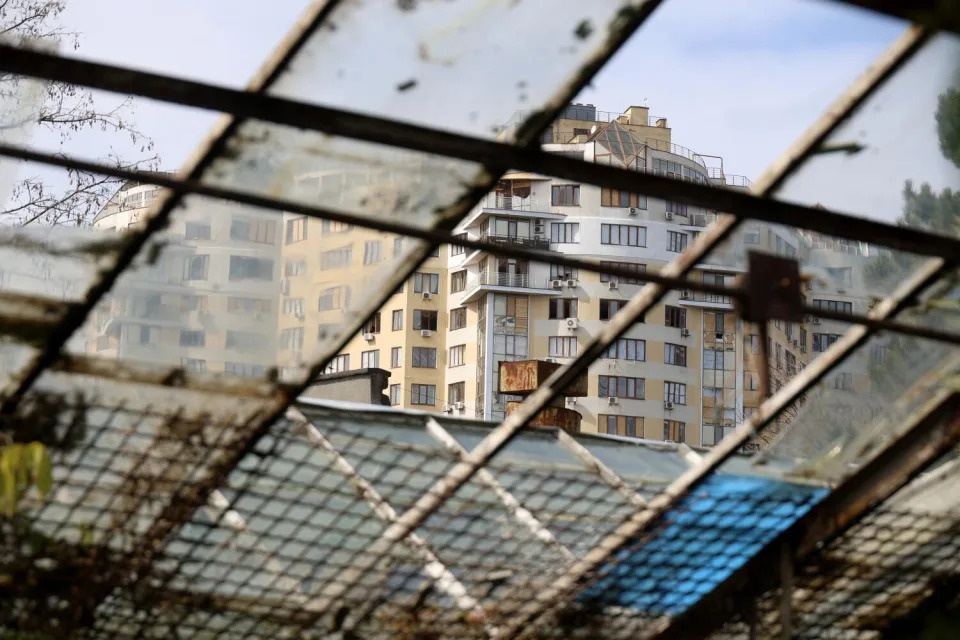
More recently, on April 10, six people, including a 10-year-old girl, were killed in a strike on an outlying district of Odesa. That attack came on the 80th anniversary of Odesa’s liberation from Nazi forces during World War II.
The Odesa port and two others on the nearby seacoast have been a particular target of Russian wrath for the last eight months, since Ukraine managed to open a coast-hugging 350-mile Black Sea grain corridor to the Bosporus strait.
At the war’s outset, world grain prices jumped as Ukraine exports slumped, causing hardship in some of the world’s most impoverished countries. Now, though, almost 40 million tons of cargo have been shipped since August 2023, port officials said.
“Sometimes we spend all night in a shelter, then take a coffee and go straight to work — this is our reality,” said Dmytro Barinov, the deputy head of the state-owned Ukrainian Sea Ports Authority. “We feel responsibility not only for the Ukraine economy, to our farmers, but to the whole world that relies on our grain exports.”
As attacks continue and the overall war outlook grows grimmer, the city veers between a sense of relative safety and an acute awareness of peril.
Central cafes are full, and people linger at ice cream stands on the promenade. In flat green fields less than half an hour to the east, though, crews scatter pyramid-shaped reinforced cement antitank obstacles known as “dragon’s teeth.”

Odessa’s most famous landmark, the Potemkin Stairs — best known for the harrowing tumbling-baby-carriage scene in the 1925 film “Battleship Potemkin” — are topped with a roll of barbed wire. But a military checkpoint a few blocks away has been removed, and pedestrians can draw close enough to gaze down the 192 steps leading to the seafront.
The source of the city’s splendor is now the principal cause of its jeopardy. Odesa’s free port status financed its extraordinary architectural flowering in the 1800s and helped build its vibrant multiethnic society.
Russian warships have been driven back from Ukraine’s Black Sea coast — “when the big war started, we could see them from our palaces,” said naval spokesman Dytro Pletenchuk — but only 150 nautical miles to the east-southeast lies the Russian-occupied Crimean peninsula, from which many strikes are launched.
At that range, there is little time for people in Odesa to get to shelter once missiles are in the air.
Read more: In a storied Ukrainian city, a dance with wartime destiny
Russia’s 2014 seizure of Crimea and its fomenting of a separatist conflict in Ukraine’s east were a precursor to the current invasion. Many here harbor ardent hopes of someday recapturing the peninsula, and are heartened by Ukrainian strikes on Russian forces there, including a damaging attack Wednesday on a large Russian airfield.
At the National Academic Opera and Ballet Theater — where April offerings include the ballet “Giselle” and Verdi’s opera “Nabucco” — the show goes on, as it has almost continuously since the start of the conflict. The neo-Baroque opera house is no longer sandbagged, but the war still feels ever present.

“After night bombings come the most difficult days: Actors, singers and dancers are just physically tired, and it’s hard to deliver the emotional spectrum in their performances,” said Oksana Ternenko, 50, a stage director.
“Sometimes it’s like a theater of the absurd,” she said. “We are starting to rehearse, and a singer is showing photos on the phone: ‘Look, here’s a piece of my house that fell on my car.’ ”
Despite all, Odesa maintains an irrepressible offbeat humor.

“My parents and I, we’re very happy that Granny is deaf, so the explosions don’t scare her,” said 14-year-old Alina Kulik, who lives in an outlying district that has been hit repeatedly.
“Right now, we’re in a place that’s a little dangerous,” said her 15-year-old friend Anastasia Jelonkina, as the two girls perched on a promenade bench overlooking the seaport. “We know that. But here we are!”
Odesa’s beaches, beloved by tourists before the war and by locals all along, are full again as spring temperatures rise. During much of the last two years, danger from mines and debris from destruction of a massive dam on the Dnipro River kept the shoreline largely closed.

But intensive de-mining efforts have rendered the sea off Odesa relatively safe for swimming again, and a tousle-haired Irina Khosovana, a 62-year-old doctor who is a fifth-generation Odesan, said nothing — not even periodic air alerts — could keep her away.
“The sea is our comfort,” she said, gesturing toward the blue expanse. “Coming here is as important as life.”
A largely Russian-speaking city at the start of the war, Odesa still has deep cultural roots in common with the enemy now battering its shores. The poet Pushkin is still revered, with a grand boulevard named for him and a big statue taking pride of place in front of the city council building.
But another prominent piece of statuary near the opera house was deemed a symbol of colonialist oppression — that of the Russian empress known as Catherine the Great. Her likeness, hauled down in the war’s first year, is now boxed up in a black lean-to outside the damaged art museum.
Atop the empty plinth where the statue once stood flies a blue-and-yellow Ukrainian flag.





